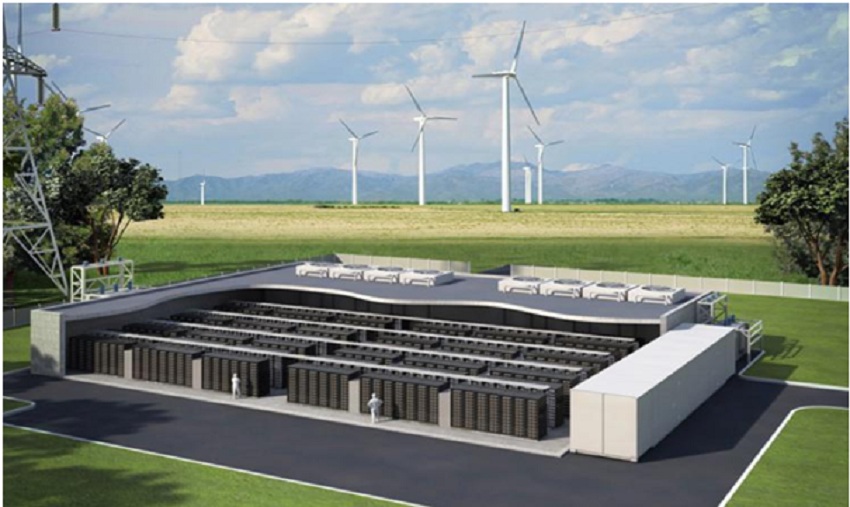
All You Need to Know About Diesel Gensets and Energy Storage Systems!
What is a Diesel Genset?
There are two parts to diesel genset: a diesel engine and an alternator, built to make electricity. It is how they work! People use generators when there is a power outage to keep their homes running. We can also use gensets as the main energy source in places where there is no power grid.
How does a Diesel Genset work?
Generally, electricity forms by converting rotational energy from an engine into electricity. A diesel engine then uses this electricity to burn fuel. A generator is a machine that burns fuel to make electricity.
Why do you need a generator set for your business?
There are a lot of good reasons to buy diesel gensets, like the ones below:
- There are no other ways to get electricity. It is one way of meeting the needs of the supplier.
- If there is a short-term loss of electricity from the mains, an additional source of electricity is needed. These power outages can have a big impact on a lot of businesses, including:
- Hospitals are having problems because they don’t have enough emergency power supply for medical equipment.
- Data centers: As an emergency power supply.
- To turn on power, lighting, elevators, and ventilation in offices and buildings in the case of power break-outs.
What is the difference between kW and kVA?
They have very different power factors, which is the most important thing to note here. People use the kW (kilowatt) as a measure of real power. The kW measures total power. Reactive power makes the kVA value bigger than the kW value. The normal power factor for a three-phase generator is 0.8, but it can vary from 0 to 1 depending on the model and how much power it needs.
KVA (Kilo-Volt Ampere) measures a generator’s capacity. When discussing industrial and commercial generators, the KW is more common in countries like the United States. In the rest of the world, kVA is more common when talking about gensets in most cases. How much power a generator set can make depends on how much power its engine can make.
What is the difference between standby, continuous and rated power?
Ready-to-go power generator sets find their use in emergencies, like when the power goes out. They can be very useful when there is a backup power source, like utility power, which we usually need during a blackout.
Uninterruptible power supply (UPS) allows a rated power generator set to provide power in situations with no utility source, such as mining or oil and gas activities in remote places where the grid isn’t reachable. Higher-rated gensets, called “infinite run duration,” are used as the main source of power instead of as a backup source of power when the main source fails.
What are Energy Storage Systems?
Efficient energy storage is an important part of the energy transition because it makes renewable energy more flexible and ensures that we can use it in the whole system. On top of making it easier to use renewable energy sources, energy storage also makes the electrical system more efficient. Let us know which energy storage solutions are the most efficient and which has the best chance of speeding up the transition to a cleaner electric grid.
Electrical energy can be made, transmitted, and changed with some ease, even though it wasn’t until recently that it was possible to store it in a way that was easy to use, simple, and cheap. Renewable energy, which we can’t control, needs the help of storage systems to be integrated, keep clean energy from being discharged during off-peak times, and improve the efficiency and the safety of the electrical grid.
In a world that is moving away from fossil fuels and toward renewable energy sources like wind and solar power, better ways to store electricity are very important. This technology is very important for making sure that grid systems stay balanced as the world moves away from fossil fuels.
Main Energy Storage Systems
In order to use electricity, one must change it into other types of energy, like mechanical or chemical energy. It is because electrical energy can’t be kept in its pure form. It doesn’t matter where the energy storage systems are in the supply chain. They can add value to every part of the process. There are three types of energy storage systems in terms of how much energy they can store.
Lithium Batteries- The Future of Storage
Over the last few years, the renewable energy industry has found a way to store the energy that it makes. Lithium-ion batteries are the answer. Lithium- one of the smallest elements on the periodic table; can store a lot of energy. Lithium has high electrochemical potential, which means we can use it to make batteries that can store a lot of energy. Despite their low weight and high efficiency, only one problem has kept lithium batteries from becoming the leading storage technology for renewable energy. Lithium batteries are so pricey: they are very hard to make.
However, it looks like things are going to change soon. A BloombergNEF report says that the price of lithium-ion batteries will fall dramatically in the next few years. The report says that the cost will fall even more than between 2010 and 2018. BNEF also says that by 2030, the cost of lithium-ion batteries per kWh will have dropped by half because demand is growing in two major markets: stationary storage and electric cars.
The amount of energy storage around the world will grow at an exponential rate. In 2018, there was only a small amount of storage, but by 2040 there will be 1,095GW/2,850GWh. A total investment of $662 billion will be needed to make this huge rise possible.


